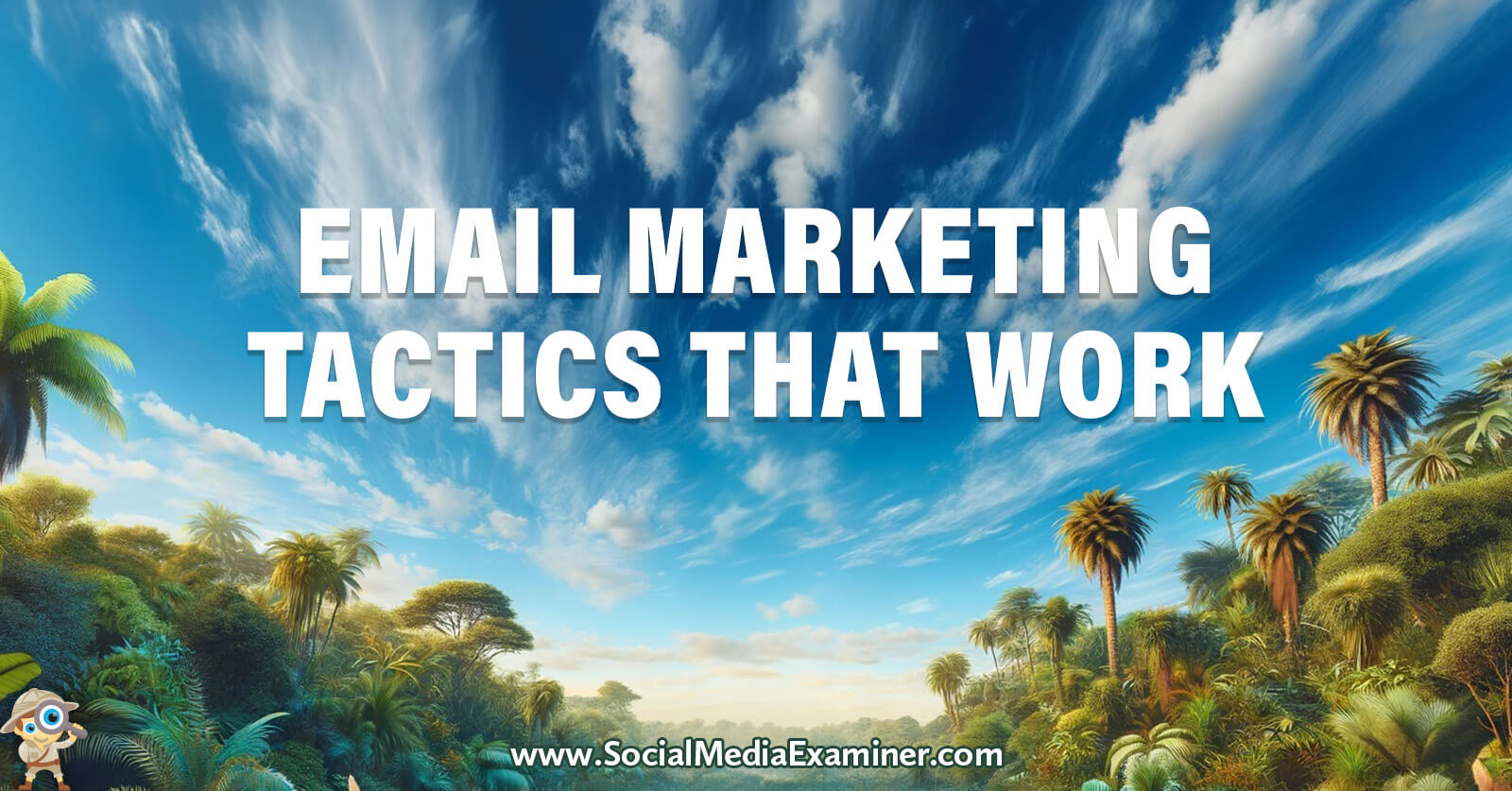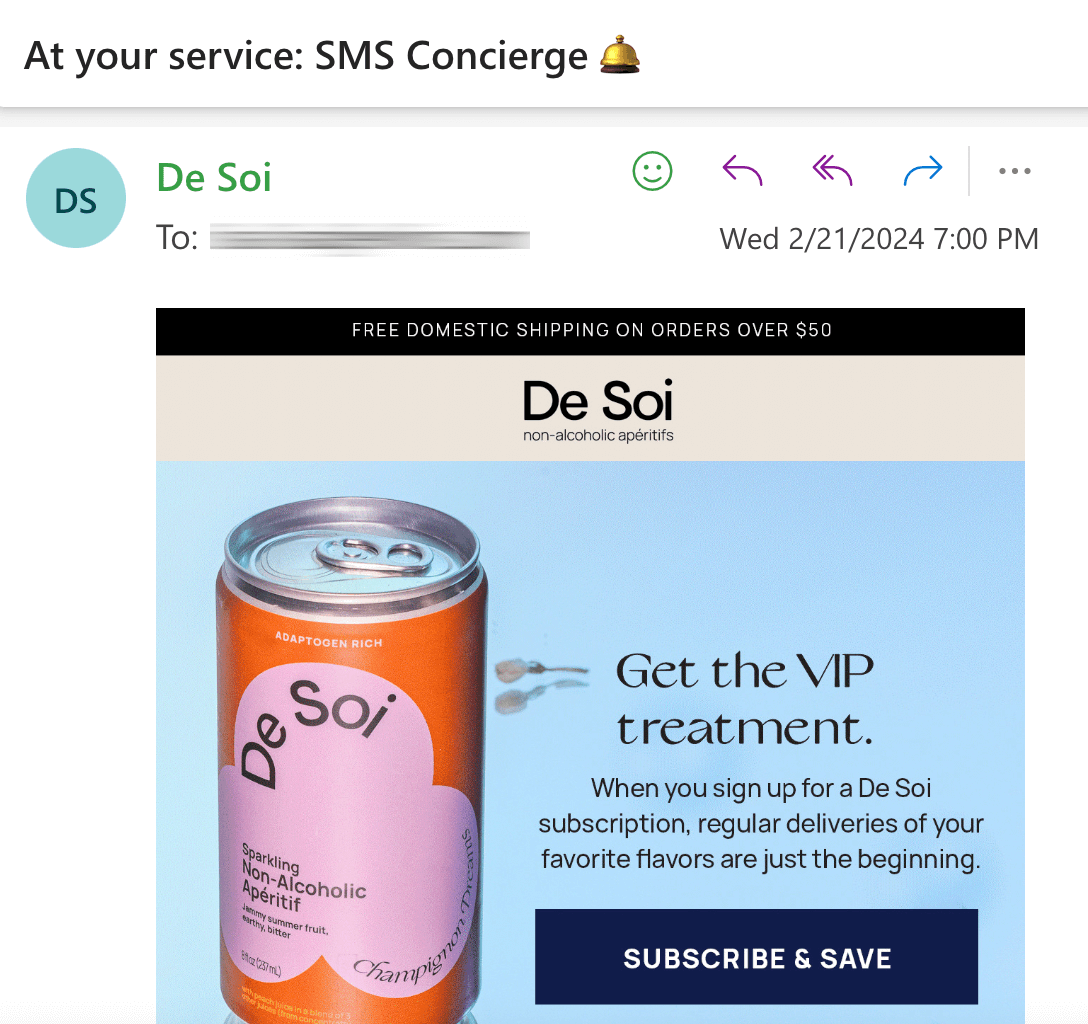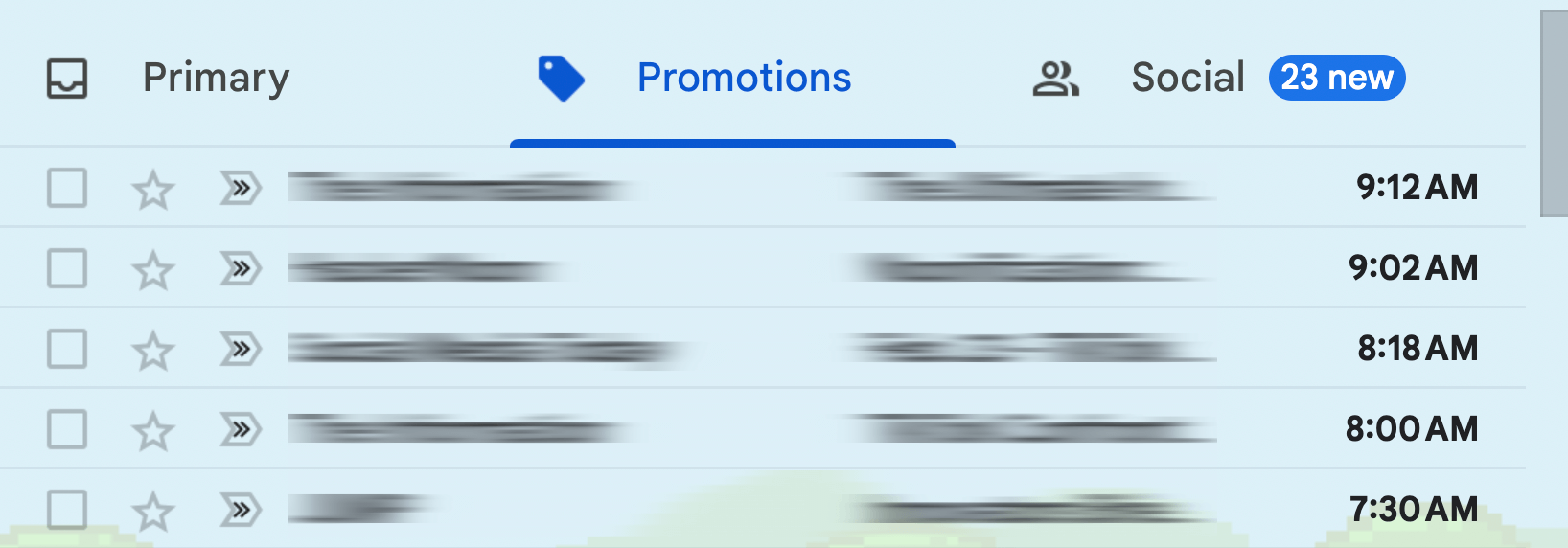Wondering if your email marketing needs an upgrade? Curious what works in 2024?
In this article, we’ll explore the latest email marketing best practices based on 6 billion emails sent annually.

Why Should Marketers Focus on Email Marketing?
Email marketing is far from dead. While one of the oldest digital marketing channels, it continues to evolve and provides unmatched opportunities for marketers to reach their audiences cost-effectively.
Jay Schwedelson, president and CEO of demand generation agency Outcome Media and host of the Do This, NOT That podcast, shares his insights on email marketing best practices in 2024, common myths, and key trends.
Debunking Outdated Email Marketing Myths: Trigger Words, Open Rates, and the Promotions Tab
A major challenge for email marketers is the proliferation of misinformation and outdated “best practices” online. Jay stresses the need to move past blanket rules around spam trigger words, emojis, capitalization, and other elements that supposedly hurt deliverability.
Inbox placement today depends primarily on engagement metrics—how often people open, click, and respond to your email—not specific content elements. Higher open and click-through rates signal to major email providers, like Gmail, that subscribers find value in the emails. Several perceived “spammy” tactics can actually lift engagement, like using the word “Free,” emojis, exclamation points, and question marks in subject lines.

“The very things that you’re avoiding… are the things, ironically, that generate the highest engagement, ”Jay notes. “You're avoiding the things that can make you a success.” Rather than worry about arbitrary lists of prohibited words, marketers should test different subject lines and content variations and pay attention to performance data.
Another myth has to do with open rates. Many marketers claim email open rates are meaningless today. They argue factors like Apple's iOS and bots inflate the rates, so the metrics aren't reliable. However, while open rates are no longer absolute, they still have value as directional metrics.
For example, suppose you test an email with an emoji in the subject line against one without, and the one with the emoji has a 35% open rate versus only 25% for the plain subject line version. In that case, it suggests the emoji boosted engagement. The rates don't precisely reflect the percentage of people opening the emails. But the 10 percentage point difference indicates which version performed better.
Open rates are like survey results—not definitive, but valuable to compare the directional impact of different marketing tactics. So, while open rate alone doesn't equal engagement, combined with other metrics like click-through and conversion rates, it remains one of the most valuable metrics for optimizing your email marketing strategy.
Additionally, many marketers worry that landing their offer emails in Gmail's Promotions tab hurts results. But Jay says that perception is wrong. The Promotions tab is actually part of the inbox, not the junk folder, and landing there can boost performance.
Only 15–20% of Gmail users even enable tabbed inbox categories; of those who do, around 50% check the Promotions tab daily. When people visit the Promotions tab, they're at the mall—actively shopping, deliberately looking for deals and offers.

So, getting your email into the Promotions tab puts your message right in front of an engaged audience ready to buy. Open and click-through rates can be 50% higher compared to the primary inbox.
Also, it's difficult for users to unsubscribe or remove your emails from the Promotions tab. So, landing there helps ensure your messages reach that important segment of deal-seeking subscribers.
Get World-Class Marketing Training — All Year Long!
Are you facing doubt, uncertainty, or overwhelm? The Social Media Marketing Society can help.
Each month, you’ll receive training from trusted marketing experts, covering everything from AI to organic social marketing. When you join, you’ll also get immediate access to:
- A library of 100+ marketing trainings
- A community of like-minded marketers
- Monthly online community meetups
- Relevant news and trends updates
#1: Optimize Your Subject Lines
Subject lines are critical—they decide whether someone opens your email. Yet most marketers spend minimal time crafting them. They obsess over campaign creative and copy, get legal approval, and only then dash off a subject line as an afterthought.
This is backwards, Jay says. No matter how great your email marketing content is, nobody sees it if the subject line doesn't get opened.
Most marketers overlook this key insight: people don't read your entire subject line. When scanning their inbox, they read just the first few characters. So, those opening 2–5 words can radically impact your email marketing performance.
Jay reveals several easy-to-implement tips to optimize your subject lines:
- Start with a number for a sense of authority and skimmability. This will lift your open rates by 20%, Jay says. For example, “7 Pitfalls to Avoid for Small Business Owners or “The 3 Hottest Fashion Trends.”
- Add relevant emojis to stand out in the inbox. This is especially useful for business-to-business marketers. Jay says emojis can be viewed properly by 95% of all receiving email networks. When testing an emoji in subject lines, he sees a 25% lift in open rates.
- Use all-caps for the first word to grab attention, like “NEW: Spring Fashion Guide.” Title casing works, too—capitalize the first letter of each word in the subject line.
- Put key ideas in brackets for emphasis, like “[Flash Sale] Shoes and Accessories.”
It’s important to ask yourself, “Am I doing something in that subject line that will allow me to stand out a little bit?” Jay says you have to do something to be a little different, and that’s how you win.
Beyond formatting, personalization again lifts performance. Call-to-action buttons increase click-through rates by over 20% when adopting first-person language—“Get my discount” rather than “Buy now” or “Save my spot” rather than “Register here.” This phrasing emphasizes user benefits over sender needs.
Jay founded the website SubjectLine, which analyzes and optimizes email subject lines for free. You simply input your proposed subject line. Leveraging customer data from the 6 billion emails sent annually, SubjectLine then provides a score showing how strong or weak your subject line is. It will even rewrite your subject line to boost open rates.
Key Drivers of Email Performance: Personalization, Urgency, and FOMO
Jay points to personalization, urgency, and FOMO (fear of missing out) as critical ingredients across high-performing email campaigns.
Many marketers believe personalization just means including someone's first name in an email or subject line. Like, “Hey Tom, check this out!” But that basic tactic no longer moves the needle. Real personalization means quickly conveying relevancy—why this message matters specifically to your target audience.
Today’s subject lines personalized around interests see much higher engagement. Imagine a line like “New hiking packs for your next adventure.” It signals upfront that the content connects to a specific interest or attribute. This builds curiosity and relevance, driving more opens.

Discover Proven Marketing Strategies and Tips
Want to go even deeper with your marketing? Check out the Social Media Marketing Podcast! Publishing weekly since 2012, the Social Media Marketing Podcast helps you navigate the constantly changing marketing jungle, with expert interviews from marketing pros.
But don’t let the name fool you. This show is about a lot more than just social media marketing. With over 600 episodes and millions of downloads each year, this show has been a trusted source for marketers for well over a decade.
Segmenting campaigns using “For [interest]” subject lines like “For DIYers,” “For Golf Enthusiasts,” or “For CFOs” allows for finer targeting. Personalization requires understanding your customers and what makes them tick. Life event triggers also resonate with readers, such as “Just for new parents” or “Just for new homeowners.”
Driving urgency through tight deadlines, discounts, and scarcity also helps prompt action. Phrases like “Almost gone” and “Only 322 left in stock” can dramatically lift open and conversion rates by stoking FOMO. Ongoing offers without hard ends can still encourage urgency through emphatic calls to action like “Hurry—Don't miss out!”
Jay considers urgency and FOMO the two things you should always consider in your email marketing campaigns. Combined, they consistently spike conversions.
Promotional Emails
The most powerful word for email marketing subject lines and promotions is “most,” Jay says. We all share a herd mentality, seeking “the best” of whatever is popular. When deciding among options, people rely heavily on signals of what others view as top quality.
Calling out your most popular, best-reviewed, most downloaded product taps into that social proof.
For example, compare subject lines like: “Pizza deals this weekend” versus “Our most 5-star reviewed pizzas—try one today!” The latter builds urgency and relevance even without listing the actual offer details. It tells people this is your hottest, highest quality option that others confirm is amazing. FOMO kicks in.
You don't need huge discounts or fancy gems to boost opens. Simply identifying your absolute best seller—whether that's 3 or 30 products—helps subscribers feel confident choosing your email.
Split Testing Emails
When A/B testing your email marketing efforts, many marketers send the new version to a small sample for an hour, then roll it out broadly if it performs well. However, Jay prefers judging based on statistical relevance over a longer period.
Send your test to a large enough segment where you can trust the results—usually at least 50,000 subscribers evenly split between A and B. And importantly, make your variants radically different—don't test tiny incremental tweaks. You want crystal-clear data on what ideas resonate.
Also, avoid testing on niche subgroups like your 10% most loyal segment. If a concept works there but has no room to scale, the test wastes effort. Define your sample size based on having a broader pool that can fully deploy the winning message if the test succeeds.
Test big enough splits to strengthen data, differentiate your variants substantially, and ensure you can expand upon any victories with the broader audience.
#2: Optimize Cadence and Send Time
With many marketers blasting the same static emails to their lists, Jay stresses the value of changing formats and layouts.
Radically departing from your template for every third email can lift open rates by creating anticipation and curiosity among your readers. For example, it could be a letter format from your CEO saying, “Hey, here’s a new special discount for you,” or it could be as simple as changing out the images you use.
Many marketers might fear mixing it up, trusting their proven methods. Jay advises experimenting with or testing emails when changing formats to see what converts.
Rethinking Unsubscribes
Many marketers view unsubscribes as failures. But counterintuitively, more unsubscribes can indicate improved email marketing performance. There are two common reasons people unsubscribe:
- General inbox overload—they mass clean out subscriptions.
- Your email finally broke through the clutter and got their attention. But upon re-engaging, they realize they're no longer interested in your content.
Scenario two means your emails went from being wallpaper to getting noticed. Even if readers ultimately unsubscribe, your changes, like new subject line formats, work. You drove visibility and reassessment where before your emails went ignored.
So, increased unsubscribes and better open and click rates suggest you've refreshed your approach. Don't let the one bad metric scare you away when the holistic picture is positive. Jay emphasizes never letting a nasty complaint email derail your strategy, either. That's one unhappy person ruining things for everyone else. Marketers must not let the loudest, negative voice in the room steer their helpful content.
Email Send Days and Times
When determining the best days and times to send emails, Jay says to avoid relying on generic “best practice” advice. Every audience is different. Instead, benchmark your own list's performance.
First, break your data down by email type—announcements, newsletters, promotions, etc. Then, track each category's open, click-through, and conversion rates across multiple days/times. Different segments react differently.
For example, older audiences, such as boomers, tend to read emails earlier, while younger demographics, such as Generation Z, skew towards afternoons and evenings. Promotional emails see lower early morning opens versus informational newsletters.
The critical insight is that while absolute metric comparisons may look worse for non-peak days/times, you're actually reaching a completely different swath of subscribers. It's additive visibility.
So, regularly test sending across multiple days and segments. Any email time that produces fewer opens than your “best” may still be valuable in engaging previously silent subscribers. Optimize based on your list's unique makeup, not generic principles. Reaching more people across more days drives more revenue, even if some sends seem suboptimal based on superficial open-rate reviews.
For global email lists, the best practice is sending based on the recipient's local time zone. This allows you to align delivery with when each contact will most likely check email.
Jay says you should also be using Send Time Optimization. Leading email marketing platforms offer this feature, which learns each subscriber's email engagement patterns. It identifies the optimal time to deliver your messages to each inbox based on their unique habits. It considers the days they open the email, the time of day, and how frequently.
This optimization is an incredibly powerful way to boost email effectiveness, especially for global audiences.
Jay Schwedelson is president and CEO of Outcome Media, a demand generation agency that helps marketers drive growth across B2B and B2C industries. He’s founder of SubjectLine, GURU Media Hub, and The GURU Conference—the world’s largest email marketing event. He also hosts the Do This, NOT That podcast. You can find him on LinkedIn.
Other Notes From This Episode
- Connect with Michael Stelzner @Stelzner on Instagram and @Mike_Stelzner on Twitter.
- Watch this interview and other exclusive content from Social Media Examiner on YouTube.
Listen to the Podcast Now
This article is sourced from the Social Media Marketing Podcast, a top marketing podcast. Listen or subscribe below.
Where to subscribe: Apple Podcasts | Spotify | YouTube Music | YouTube | Amazon Music | RSS
✋🏽 If you enjoyed this episode of the Social Media Marketing podcast, please head over to Apple Podcasts, leave a rating, write a review, and subscribe.
Stay Up-to-Date: Get New Marketing Articles Delivered to You!
Don't miss out on upcoming social media marketing insights and strategies! Sign up to receive notifications when we publish new articles on Social Media Examiner. Our expertly crafted content will help you stay ahead of the curve and drive results for your business. Click the link below to sign up now and receive our annual report!
Attention Agency Owners, Brand Marketers, and Consultants

Introducing the Marketing Agency Show–our newest podcast designed to explore the struggles of agency marketers.
Join show host and agency owner, Brooke Sellas, as she interviews agency marketers and digs deep into their biggest challenges. Explore topics like navigating rough economic times, leveraging AI, service diversification, client acquisition, and much more.
Just pull up your favorite podcast app, search for Marketing Agency Show and start listening. Or click the button below for more information.

